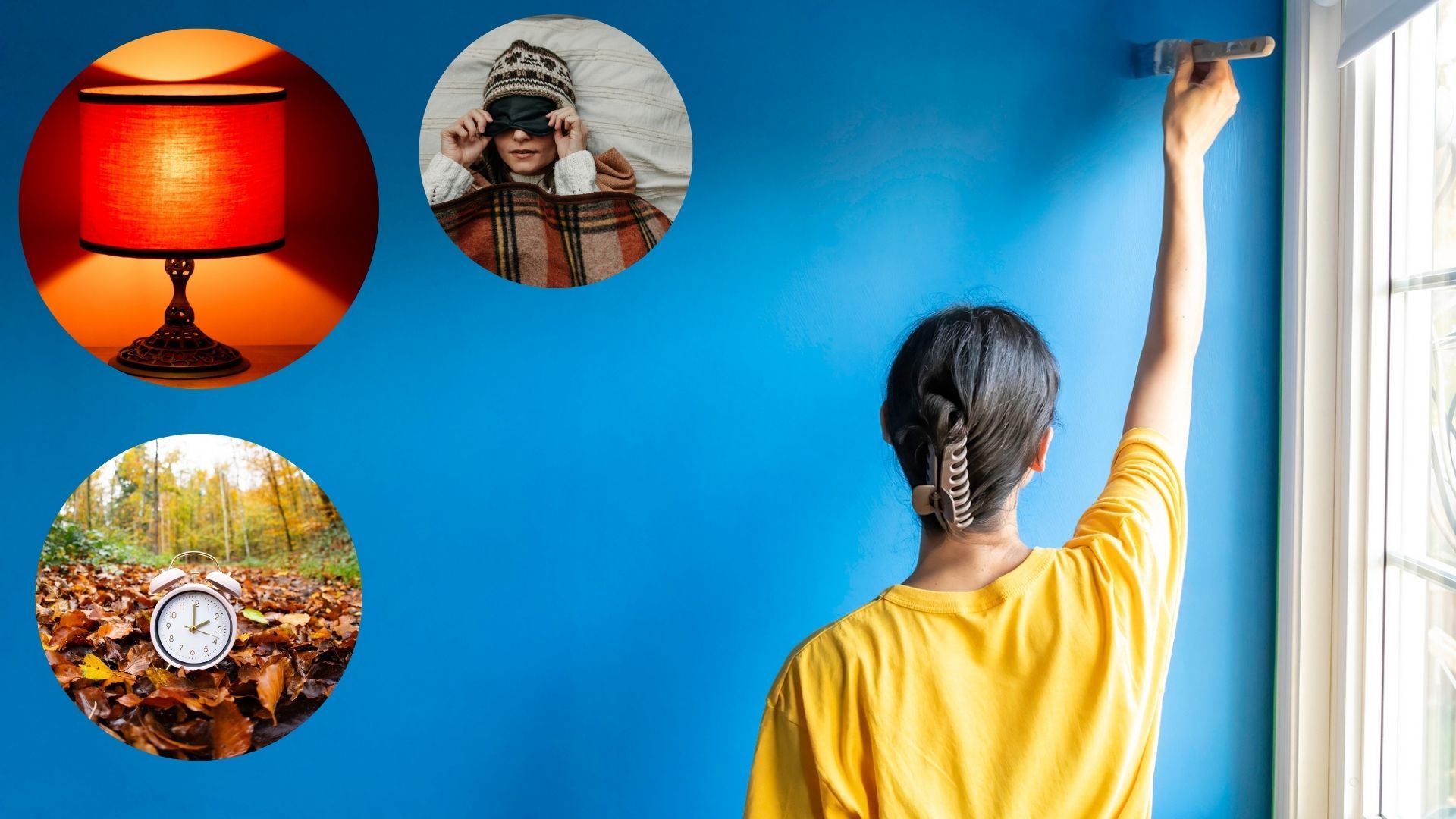
We’ve all been there: staring at the ceiling at 2 am, wondering when sleep will finally come.
Sleep troubles, especially as the nights draw in, are more common than you might think. But it turns out, where and how you sleep might matter just as much as when.
This fall, a few small tweaks to your sleep environment could make a big difference. From adjusting the lighting to rethinking your alarm clock, these seven changes can help you fall asleep faster and wake up feeling more rested.
Why is it more difficult to sleep in fall?
With the nights rolling in earlier, falling asleep should be a breeze – yet many of us find it more difficult. Research suggests our bodies naturally crave more rest during the darker, colder months. However, reduced daylight can throw off our circadian rhythm – the internal body clock that regulates sleep.
“Less daylight means weaker circadian signals, so our body clock drifts later than usual,” psychotherapist and UK Council for Psychotherapy spokesperson, Heather Darwall-Smith explains.
“Add shorter days and seasonal dips in motivation, and our routines can easily unravel,” she adds.
The key, she says, is to work with your biology, not against it. “This isn’t a personal failing – it’s your body responding to the season,” Darwall-Smith says.
“What helps is getting more morning light, building calming bedtime rituals, and sticking to a steady rhythm. It won’t make winter vanish, but it can make it far easier to sleep – and live – through,” she explains.
To help, we’ve curated seven different ways you can improve your sleep environment for a better night’s rest.
7 bedroom changes to fall asleep fast
Swap your phone alarm for a sunrise alarm clock
“Clients are often genuinely surprised at how well these work. But it makes perfect sense when you think about it: light is the main signal for our circadian system,” Darwall-Smith says.
“A sunrise alarm clock gradually brightens the room before you wake, mimicking dawn. That gentle build-up helps shut down any leftover melatonin and gives you a softer, more natural start to the day.”
The debate now? Which alarm clock to buy, and we may have you covered with a Hatch dupe. But check out our best sunrise alarm clocks guide to help find the right one for you.
Swap your bedside lamp for a red light
It might sound a bit strange, but Dr Menachem Jacobs, Resident Physician at Yale New Haven Hospital, explains that “red-light therapy uses wavelengths between 660 and 850 nanometers to get into your tissues and get your cellular mitochondria to work harder.”
What does this mean for your sleep? “Your cells make more ATP (energy), which, in theory, helps keep your circadian rhythm in check,” Dr Jacobs says.
“The light also triggers melatonin production by signalling your pineal gland that it’s time to wind down.”
A small study showed that people who used red-light devices before bed had higher levels of melatonin. While the pool of research may currently be small, red light can be a simple switch to promote better rest. Plus, our Staff Sleep Writer, Eve Davies, swears by her red light to fall asleep faster.
Dr Jacobs’ take? “Think of it as an addition to good sleep habits.”
Create the right temperature
It might be tempting to crank the heating up or pull on an electric blanket as the weather gets colder. But the perfect temperature for sleeping is up to 70°F — so make sure you keep it cool.
That’s right: a 2020 study published in the Oxford Academic Sleep journal suggests optimal sleep temperature lies between 65 to and 70°F (18 to 21 °C). So the right temperature for sleep is colder than you think!
That’s because temperature, like light exposure, is a key stimulus to your circadian hormone cycle.
While your temperature might fluctuate during the day, at night it begins to drop. By having a cooler sleep environment, you’re helping this natural process along and sending signals to your body that it’s time to doze.
Invest in a weighted blanket
On weighted blankets, Dr Jacob says “they are effective, although not for the reasons most would expect.”
“Wearing a weighted blanket produces a phenomenon known as ‘deep pressure stimulation’. This causes a decrease in cortisol levels and an increase in serotonin release by your neurological system.”
Like a warm embrace, the most important component is temperature. The ideal temperature range for weighted blankets is 65 to 68°F. Overheating makes carrying the weight unpleasant, which in turn causes you to toss around more.
Dr Jacobs continues, “When you’re more comfortable, you sleep better. Feeling physically safe reduces stress hormones, which in turn helps you fall asleep more quickly. Just make sure you get one that’s about 10% of your body weight.”
Paint your room blue
When making tweaks to your sleep space this fall, why stop at accessories like alarm clocks or blankets? Painting your room blue can promote an environment of calm and serenity.
“As an ex-art director who had a specific interest in colour psychology, it always makes me smile to see people paint their rooms to promote better sleep,” psychotherapist Heather Darwall-Smith says.
“While there’s no magic in the paint itself, the colour does influence how a room feels.”
“Soft blues create a calmer, quieter environment. If your nervous system feels soothed when you step into your bedroom, you’re already halfway to rest. In the darker months, this kind of subtle cue can really make a difference to rest,” she explains.
Other tips to create a sleep-inducing environment